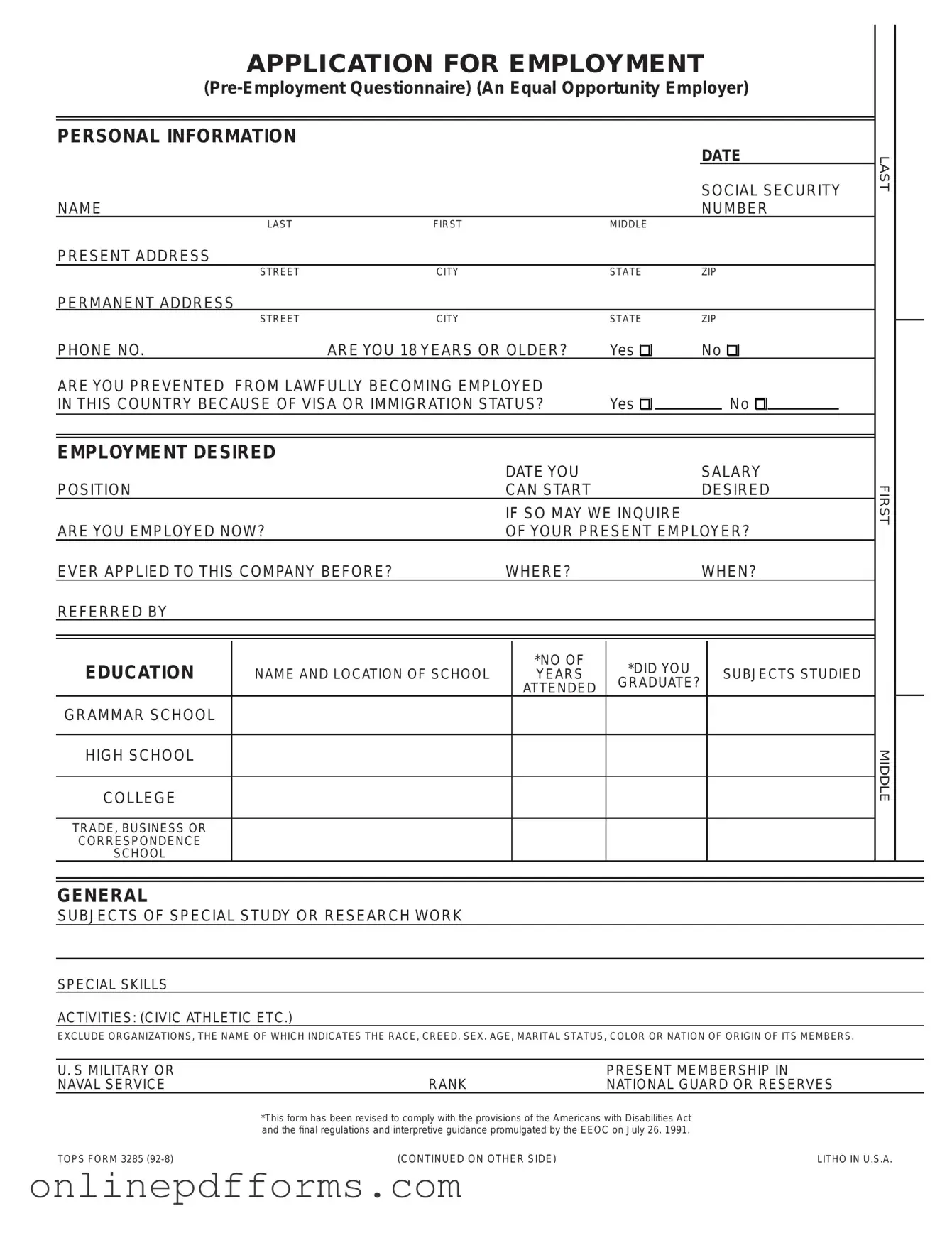The resume is a document that provides a summary of a candidate's work experience, education, and skills. Like the Employment Application PDF form, a resume is often the first impression a potential employer has of a job seeker. Both documents aim to present the applicant's qualifications in a clear and concise manner. However, while a resume allows for more personalization and creativity, the Employment Application typically follows a standardized format required by the employer.
The cover letter complements the resume and Employment Application by offering a more personal touch. It allows the candidate to explain their interest in the position and highlight specific experiences that make them a suitable fit. Both the cover letter and the Employment Application serve to introduce the applicant to the employer, but the cover letter provides context and motivation behind the application, which the Employment Application does not.
The job description is another important document that relates closely to the Employment Application. It outlines the responsibilities and qualifications required for a specific position. Understanding the job description is crucial for applicants as it guides them in tailoring their Employment Application to meet the employer's expectations. Both documents work together to ensure that candidates understand what is required and how their skills align with the role.
The reference list is a document that provides potential employers with contacts who can vouch for the candidate's skills and work ethic. Similar to the Employment Application, a reference list is often required during the hiring process. Both documents help employers assess the suitability of a candidate, but the reference list focuses more on external validation of the applicant's qualifications and character.
The background check authorization form is another document that parallels the Employment Application. It grants permission for employers to investigate a candidate's history, including criminal records and employment verification. While the Employment Application gathers personal information, the background check form ensures that employers can verify the accuracy of the information provided and assess the candidate's reliability.
The tax forms, such as the W-4, are required for employment and are similar to the Employment Application in that they are necessary for the hiring process. These forms collect personal information needed for tax withholding purposes. Both the Employment Application and tax forms require accurate information and are essential for compliance with legal and financial regulations.
The onboarding paperwork is another document that follows the Employment Application. This set of forms is filled out after a candidate is hired and includes various agreements, tax forms, and benefits enrollment. While the Employment Application is focused on the application process, onboarding paperwork is about integrating the new employee into the company. Both sets of documents are crucial for ensuring a smooth transition into employment.
